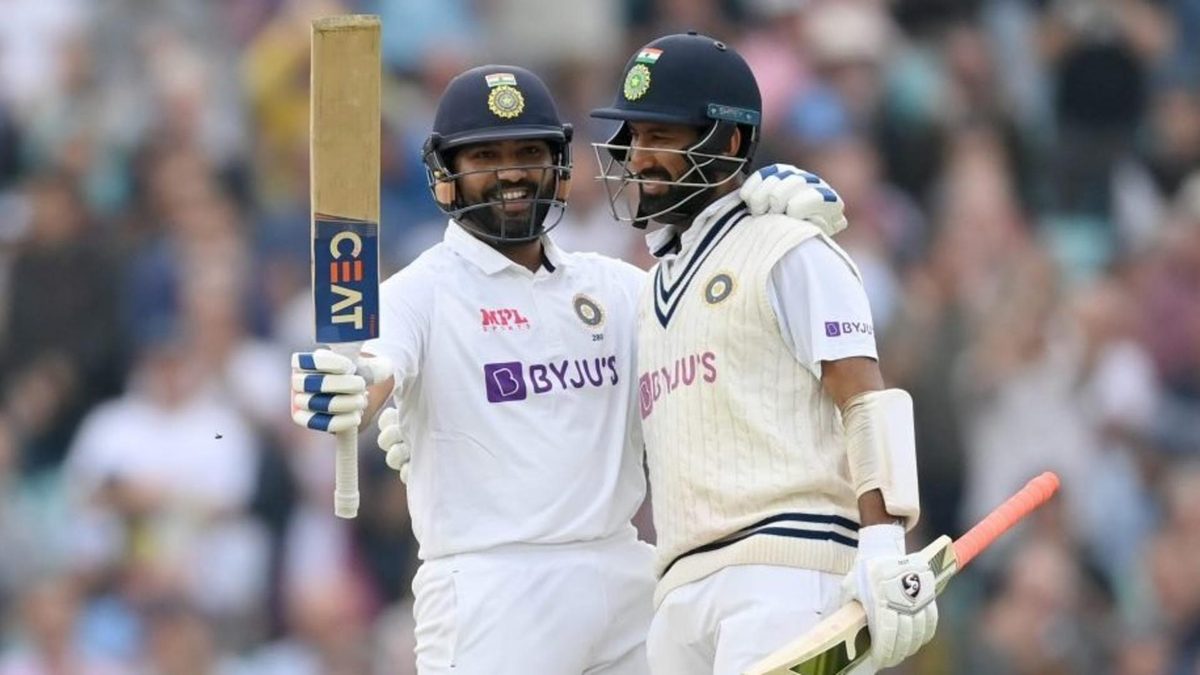
Placed at No.4 in Wisden’s Test innings of the year is Rohit Sharma’s 127 at The Oval which helped India turn around a 99-run first innings deficit and lead to a famous 157-run win.
Rohit Sharma 127 (256)
England v India
The Oval, England
Fourth Test
September 2-6, 2021
“That’s a good shot”, purred Michael Holding on commentary as Rohit Sharma stroked James Anderson straight down the ground for four. “Beautifully played.”
“Well, when Rohit Sharma’s switched on”, added Shane Warne, “and when he’s concentrating, he makes batting look easy.”
Rohit’s maiden overseas Test century may well have been eight years in the making, but when it arrived it proved worth the wait for all who witnessed it.
It was fitting too, that for a player whose reputation had been built on a phenomenal white-ball record that he went to three figures with a six, his only of the innings. Off the bowling of Moeen Ali, Rohit was on 94 with long-on back on the boundary as if to dare the him into even attempting to clear the ropes. However, with maximum risk comes maximum reward and as Rohit skipped down the track and struck the ball miles over the head of the fielder on the boundary and into the stand he brought up his eight Test century and his first overseas. It was also the third time he had brought up three figures with a six. If nothing else, ROhit was born to entertain.
This innings cemented Rohit’s reputation as an opener. Given his status in the game, it feels wrong to describe his success at the top of the order as a win for the underdog. However, India’s decision to reinvent Rohit and use him as an opener in 2019 was the result of trying to hammer a very talented square peg into a round hole. India’s middle-order was full, but leaving a player of the calibre of Rohit out of the side felt daft. Nevertheless, parachuting Rohit the shot maker into the hardest role in cricket, combined with his much spoken about poor overseas record, meant many questions swirled around whether it was a move that would work.
Arriving in England for the World Test Championship final and the Test series that followed, Rohit had shown his capabilities as an opener with four centuries coming in the 11 matches he had performed the role. However, of those 11 matches, only two had been overseas, meaning his much discussed Test average away from home remained below 30.
Over the course of five Test matches in England, Rohit averaged 48.00 and faced over 100 balls in five of his ten innings. The questions had been answered.
“The most pleasing thing was that I was able to play 250 balls,” he said to the media after his 127. “If you look at all the Test matches [this series] I have nearly played 100 balls in every innings. That to me was a goal. The first goal was to play balls, see how I can stay on the pitch for as long as possible because we do know that things start to get easier when you spend time in the middle.”
Rohit’s innings at The Oval was classical in both traditional terms and also in his own. His first 50 took 145 balls, watchful of the new ball as India chipped away at England’s significant first-innings lead. But, from that point on, Rohit played in the manner that only he can. Powerful drives over cover were combined with delicate paddle sweeps. His flat pull for four off James Anderson when he was on 90 was one of the great shots of the series. The next resulting 77 runs came off only 111 balls.
When Rohit eventually departed off the very first delivery of the second new ball, he did so with India leading by 137 runs and favourites in the match for the first time. Not only that, but it was a dismissal that befitted the enigma of a man who can never Rohit but to entertain whether. A sluggish drag down from Ollie Robinson was met with a momentary lapse in concentration that saw Sharma top edge the ball straight into the hands of fine-leg. As Shane Warne had said all along, “when Sharma’s on, he makes it look easy.” And nothing encapsulated just how true that comment was, than the one moment where Rohit showed how hard it really had been all along.








